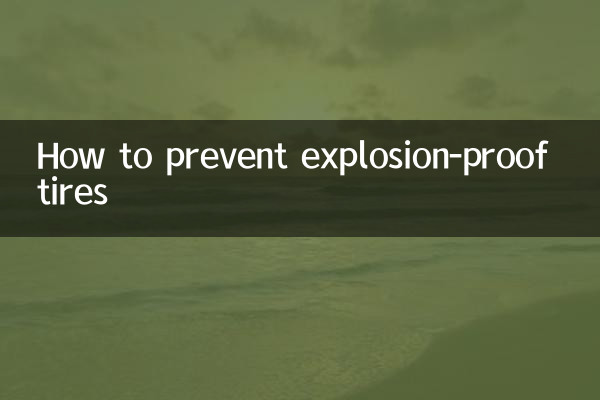How to prevent explosion-proof tires
In recent years, with the increase in car ownership, tire safety issues have attracted much attention. Explosion-proof tires (Run-Flat Tire) have gradually become the first choice for car owners due to their unique explosion-proof performance. This article will introduce in detail the principles, classification, advantages and disadvantages of explosion-proof tires, and purchase suggestions to help you fully understand this technology.
1. The principle of explosion-proof tires

The core technology of explosion-proof tires lies in their special structure and material design. Unlike traditional tires, explosion-proof tires use reinforced materials (such as high-density rubber or composite materials) in the tire wall. Even when the pressure is completely lost, they can continue to travel a certain distance based on the support force of the tire wall (usually 80-100 kilometers).
| Comparison of explosion-proof tires with traditional tires | Explosion-proof tires | Traditional tires |
|---|---|---|
| Driving ability after loss of pressure | Can continue driving 80-100 kilometers | Can't drive immediately |
| Tire wall thickness | Thicker, reinforced design | Thinner |
| weight | Heavier | Lighter |
| price | Higher | Lower |
2. Classification of explosion-proof tires
Currently, the explosion-proof tires on the market are mainly divided into the following two categories:
1.Self-supported explosion-proof tires: By strengthening the tire wall design, relying on the tire wall to support the vehicle weight after the pressure is lost.
2.Auxiliary support type explosion-proof tires: Install support rings or other devices in the tire to provide additional support after loss of pressure.
| type | How it works | Representative Brand |
|---|---|---|
| Self-supported | Reinforced tire wall design | Michelin Pilot Sport 4 ZP |
| Auxiliary support type | Tire inner support ring | Goodyear RunOnFlat |
3. Pros and cons of explosion-proof tires
advantage:
1. Improve driving safety: You can continue driving after a tire blows to avoid sudden loss of control.
2. Save spare tires: reduce the weight of the vehicle and increase storage space.
3. Reduce rescue needs: You can drive to the maintenance point by yourself.
shortcoming:
1. Poor comfort: The tire wall is hard and the shock absorption effect is not as good as that of ordinary tires.
2. Higher price: usually 30%-50% more expensive than ordinary tires.
3. Maintenance is difficult: Once damaged, it often needs to be replaced, and repair is difficult.
4. How to choose explosion-proof tires
1.Confirm the model adaptation: Not all vehicles are suitable for installing explosion-proof tires, and you need to consult a professional technician.
2.Pay attention to certification marks: Recognize RFT (Run-Flat Technology) or ZP (Zero Pressure) certifications.
3.Select the right specification: Purchase strictly according to the size recommended in the vehicle manual.
4.Brand selection: The quality of major brands such as Michelin, Bridgestone, and Goodyear is more guaranteed.
| brand | Representative products | Features |
|---|---|---|
| Michelin | Primacy 3 ZP | Silent and comfortable |
| Bridgestone | DriveGuard | Strong durability |
| Goodyear | Eagle F1 Asymmetric 3 ROF | Excellent motion performance |
5. Things to note when using explosion-proof tires
1.Tire pressure monitoring: It is necessary to be equipped with a tire pressure monitoring system (TPMS) to detect tire pressure abnormalities in a timely manner.
2.Regular inspections: It is recommended to check tire pressure and wear once a month.
3.Driving restrictions: After the pressure is lost, repair should be done as soon as possible to avoid long-term driving.
4.Speed limit: The driving speed shall not exceed 80km/h under pressure loss.
6. Future development of explosion-proof tires
With the advancement of materials science, explosion-proof tires will develop in the direction of lighter weight and more comfortable in the future. Many tire manufacturers are developing new composite materials, hoping to improve driving comfort while maintaining explosion-proof performance. In addition, the integration of smart tire technology will also bring more possibilities to explosion-proof tires, such as real-time monitoring of tire status and automatic warning functions.
In short, although explosion-proof tires are expensive, the safety guarantees they provide are irreplaceable. For car owners who often drive long distances or pay attention to safety, explosion-proof tires are undoubtedly an option worth considering.

check the details

check the details